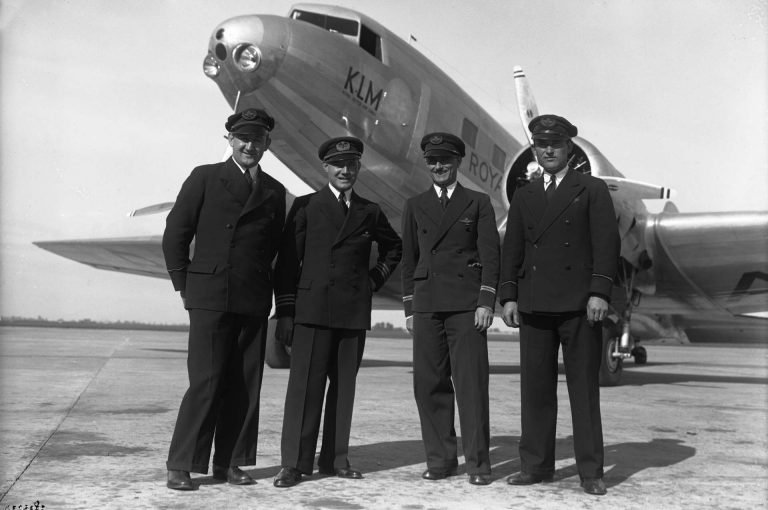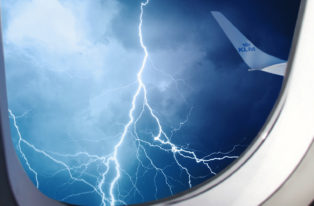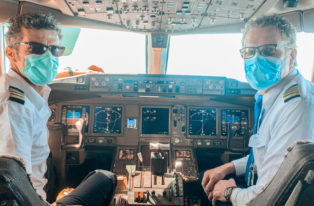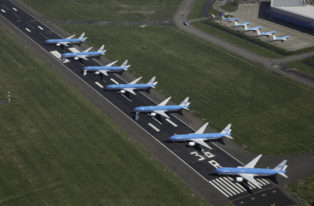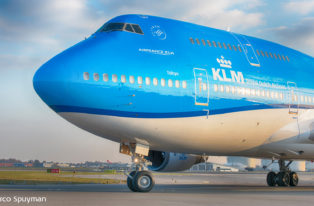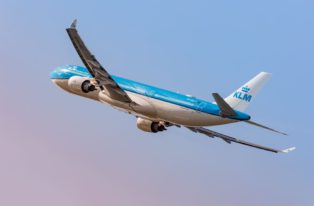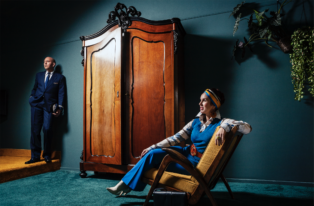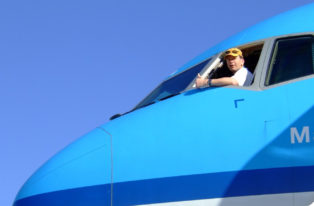The Legendary Victory of The Uiver
It’s a great story, and will continue to be one that reads like a thrilling boy’s adventure — the London-to-Melbourne race involving the Uiver in 1934. Entire books have been written about it. In fact, real aviation aficionados need not read any further. There’s nothing new in this blog for them. But, if the terms DC-2 PH-AJU or the Uiver (a Dutch dialect word for Stork) and its crew don’t ring any bells, please read on. This is all about a remarkable bit of history, both for KLM and aviation in general.
Even in its earliest years — for it was only 15 years old in 1934 — KLM had shown repeatedly that it had great ambitions. KLM had made its first flight to the Dutch East Indies (now Indonesia) as early as the 1920s. By the mid-1930s the route — which had long-since become the most distant intercontinental route — had long since proven its success. By late 1934, preparations for the first transatlantic flight were in full swing and KLM would achieve its ambition by the end of the year. It was important to KLM to show that the company could fly new, reliable, and safe routes using good equipment, eventually adding the destinations to our network.

DC-2 PH-AJU Uiver before the Melbourne Race, Nr 44 Schiphol, 1934.
Flight was exciting
That was the case for Jakarta, Paramaribo and Curaçao — and for Australia. And there began the story to which the Uiver will be inextricably linked for all time. In the years leading up to the Second World War, an air race was a remarkable phenomenon. In the early years of civil aviation, pilots were heroes. Navigation equipment was limited. Some aircraft were outfitted with radio and telegraph, but that was by no means a matter of fact. If pilots lost contact with the ground, all they had were maps, a compass, and their eyes. Aircraft flew much lower than they do now because there was no such thing as a pressurised cabin. But that made them far more susceptible to weather conditions. You couldn’t fly over the rainbow. But, for better or worse, you could try to fly through one. That called for a lot in terms of piloting qualities, and pilots had to be ready and willing to improvise. No matter how well you prepared, the chances were still pretty great that you would come up against a whole host of unexpected factors on the route, to say nothing of engine breakdowns or damage to the aircraft. This made an air race extremely challenging and exciting. Flight was exciting.

Fully packed grandstands at the arrival of the Uiver in the Melbourne Race . Schiphol, 1934
Handicap race
1934 saw the legendary London-to-Melbourne race, which was held to commemorate the Australian city’s one-hundredth anniversary. Officially the speed race was called MacRobertson International Air Race, and the handicap race was called — that’s right — the MacRobertson International Handicap Air Race. In the second race, factors such as greater weight in the form of passengers and cargo combined with speed all played a role. KLM’s ambition was clear to see, in that it entered into both race categories flying two brand-new aircraft — the DC-2 for the speed race and a newly designed Fokker F-XXVII for the handicap race. Because of problems that arose in taking possession of the Fokker KLM’s competition was limited to the DC-2’s flight. The handicap race was more interesting for KLM, for it wanted to show that it could transport passengers quickly, comfortably, and safely from one place to another, even if the destination was on the other side of the world.

DC-2, PH-AJU, Uiver, being pulled out of the mud in Albury.
Up to its axles in mud
The crew comprised four highly experienced men — captain Koene Dirk Parmentier, first officer Jan Moll, flight engineer Bouwe Prins, and telegrapher Cornelis van Brugge. They flew three passengers and 191 kilos of mail in 3 days, 18 hours, and 17 minutes to Australia from 20 to 24 October. Certainly in the Netherlands, people were hanging on to every bit of news about the Uiver and its crew. Everyone was following their every move on the radio — the only means of speedy communication. When the news broke that the Uiver had won the handicap class and had come in second in the speed category, a great party broke out in the street in front of KLM’s headquarters in The Hague, regardless of the fact that it was the middle of the night. Albert Plesman was very nearly hoisted onto the shoulders of the crowd. It had remained exciting down to the final moments.
Just before the finish, late at night, Parmentier was forced to land the plane in Albury 320 kilometres northeast of Melbourne because of the terrible weather. The stop was unplanned and they did not land at an airfield, but on a race course which the rain had turned into a quagmire. The residents of Albury had been called out to shine the headlamps of their cars on the race track so that Parmentier could set down the Uiver on the ground. As soon as it came to a halt, though, it sank into the mud up to its axles. It’s well known that, the following morning, the local population gathered again to pull the DC-2 out of the mud. After an eight and-a-half hour interruption, the Uiver set off on its final leg, landing in Melbourne at ten minutes to one in the morning, Dutch time. That is when the party broke out.

Telegram of Queen Wilhemina to congatulate KLM an the Uiver crew.
Indelible memories
Queen Wilhelmina sent a telegram of congratulations and dubbed the crew members Knights of the Order of Orange-Nassau. A month later, the Uiver was greeted with great pomp at Schiphol. Enormous grandstands were set up on the grounds for the ceremony. On 21 November, the Uiver landed at Schiphol to the cheers of thousands of spectators. There was no shortage of memorabilia to commemorate the victory. Books, placards, pins, a song, epic poems, spoons, and plaques — nothing went too far. Sadly, the victory did not bring KLM the one thing it had hoped for the most — landing rights in Australia. Not until 1951 would a KLM aircraft land again in Australia, this time in Sydney.

Honouring Parmentier and Moll following the completion of the Melbourne Race.
But the thrill of victory resounded for a long time and KLM made headlines at home and around the world. Sadly, the Uiver fared less well. The aircraft crashed on 20 December of that same year in Iraq. All passengers and crew were killed. Nevertheless, there are two more “Uivers” extant. One is stationed at the Aviodrome in the Netherlands and, apparently, is still airworthy. For a long time, the other could be found in Albury as a memorial. However, it seems to be badly in need of repairs. Whatever the case, whoever says “Uiver” says “London-to-Melbourne” — and back again. No name and event are so inextricably linked. An act of heroism never loses its lustre.
